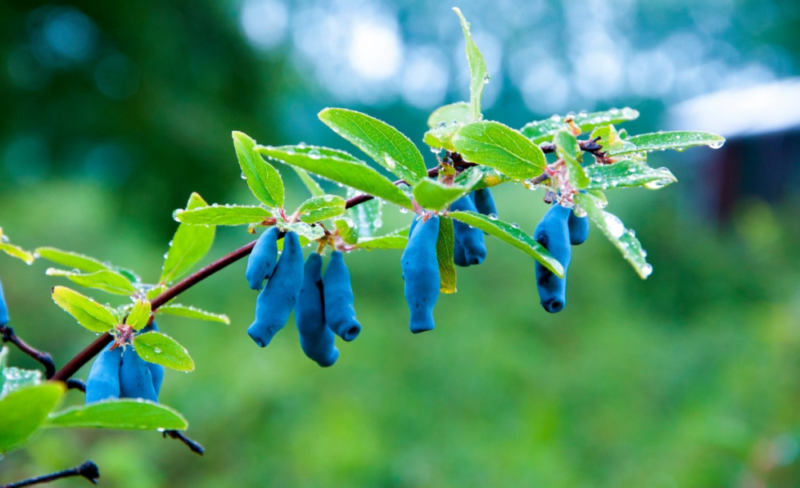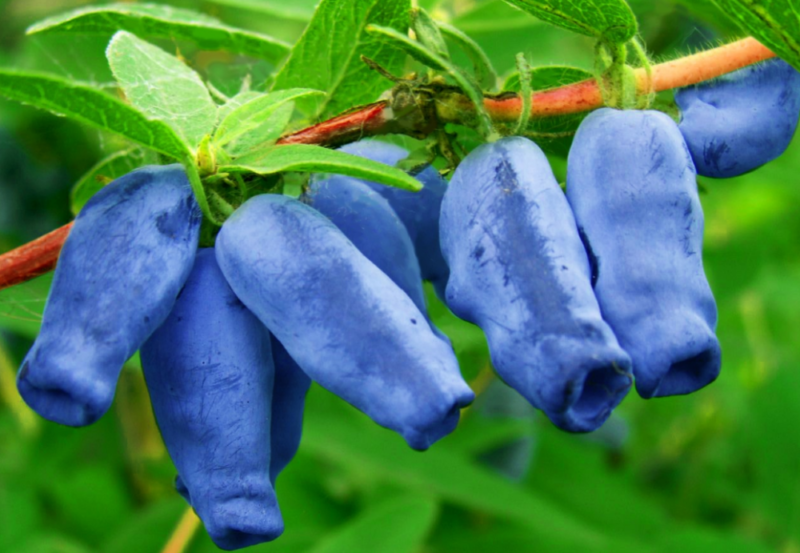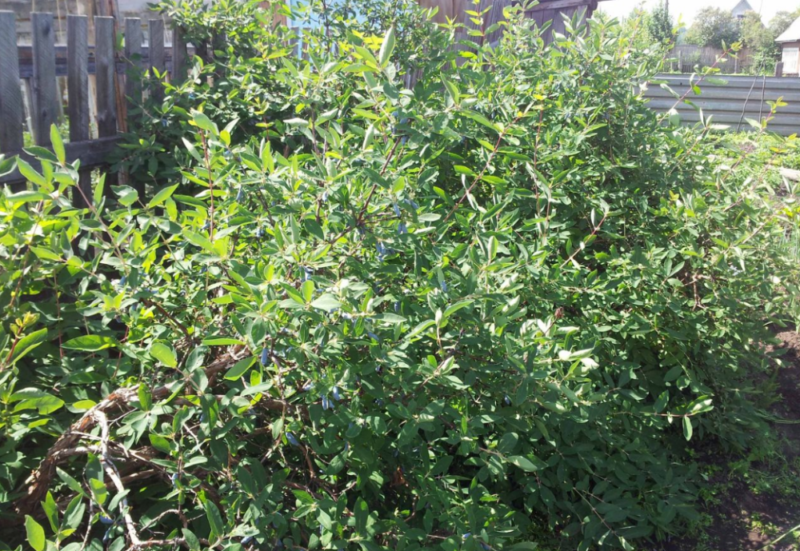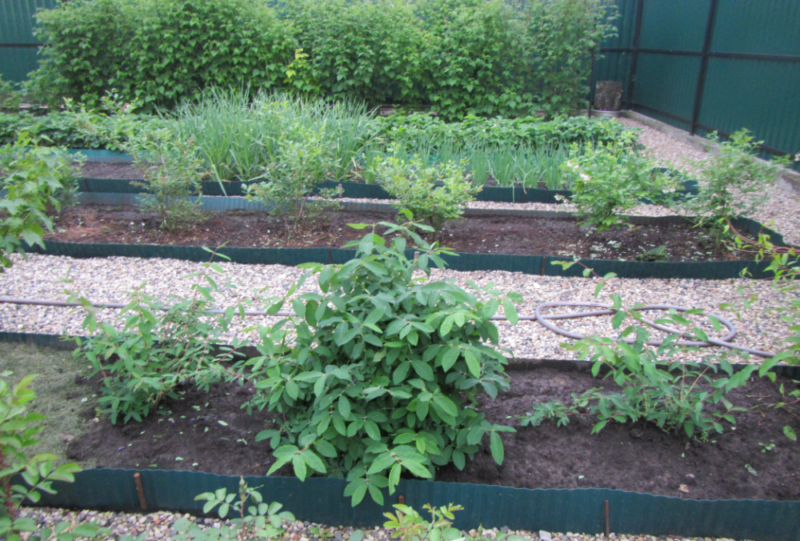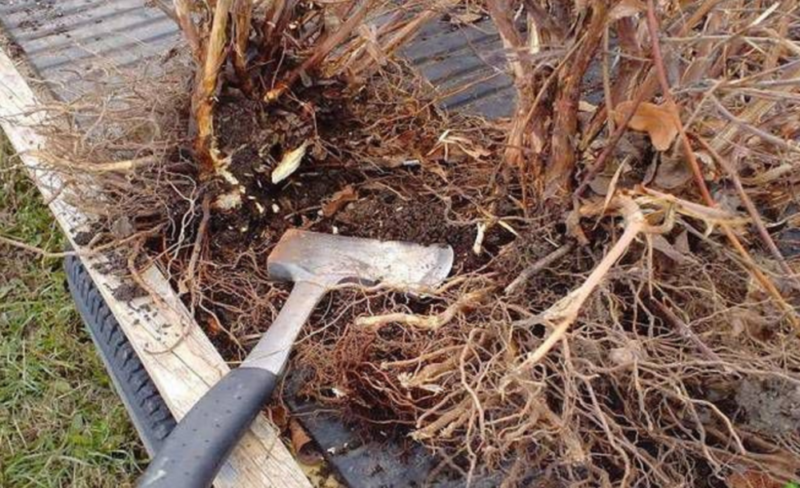Edible Bakchar honeysuckle has many varieties of different maturity and can be grown even in regions with severe winters.
Material Content:
Description of edible varieties of Bakchar honeysuckle
One of the most popular varieties of honeysuckle early ripening - "Blue Bird".
Brief description of the variety:
- It is a shrub reaching 1 meter.
- Berries reach 2 cm in length.
- The variety is very unpretentious to the growing conditions, it tolerates even severe frost and practically does not crumble.
Another early-ripening variety is Morena. The culture is characterized by increased winter hardiness, gives large berries up to 3 cm in length. Productivity is high. The fruits have a sweet and sour, pleasant taste and aromatic. The variety is self-pollinated, therefore, it does not need the neighborhood of additional varieties of honeysuckle, acting as pollinators. Berries practically do not crumble.
Large-fruited medium-term variety - “Bakcharsky Giant”. The plant is distinguished by tall bushes, an oval-shaped crown, sparse. Honeysuckle "Bakcharsky Giant" gives large berries weighing up to 2.5 g and a length of 5 cm. The taste of the fruit is excellent, sweet and sour, the tasting score is 4.8 points out of 5.
Bakcharskaya Honeysuckle “Yubileinaya” is highly appreciated by gourmets. This hybrid is obtained by crossing the Kamchatka honeysuckle and the Turchaninov. Has a spherical crown, reaches a height of 1.8 meters. With good content, the variety can produce about 3 kg of fruit from the bush. Maturing dates depend on the region of cultivation.
Growing Features
To grow strong, healthy shrubs of honeysuckle, as well as high-yielding, you should know the characteristics of the plant. Honeysuckle gives a lot of shoots, and forms a fairly lush crown.In mid-summer, the berry begins to lay flower buds next year.
When planting and selecting a site, the structure of the root system should be considered. So, the roots of honeysuckle grow both in depth and in width by about 70 cm.
Honeysuckle wood is very strong, so you will have to cut branches with a saw. At about the 4th year of life, the bark begins to crack, but this is not a disease, but the peculiarities of honeysuckle growth.
Outdoor landing
Landing of a honeysuckle begins with a choice of a place. Although if the site is initially improperly selected, the shrub will survive the transplant well.
This plant prefers fertile loam and bright sun. And in the shade, the bushes will develop well, but in this case a large harvest should not be expected. Neutral soil is desirable - honeysuckle cannot tolerate acidic soil.
This plant is cross-pollinated, so it will be very bad to bear fruit alone. The more neighbors the edible honeysuckle has, the higher will be its productivity. Plant at least 3 bushes nearby.
Great variety of varieties:
- "Nymph";
- "Blue bird";
- "Violet";
- "Blue Eye".
This culture wakes up in early spring - already at the end of March, the first buds begin to bloom. Shrubs enter the dormant phase at the end of July. Therefore, it is advisable to plant a berry plant in late summer or already in early autumn. Spring planting is undesirable. If the need arises, then in the spring shrubs are transplanted along with a lump of land.
Holes for planting bushes are prepared large, with a depth of about 40 cm. A minimum of 1.5 meters is left between the plants. When planting in the hole add organic matter. Compost fertilizer gives excellent results, which is poured into each landing pit - 15-20 kg. Be sure to add 1 kg of ash to each pit during planting.
Wells are well filled with water, and then seedlings are planted, after which they are covered with soil. When planting, the neck should be deepened by 6 cm so that it gives additional processes. In conclusion, the planted plant is mulched, which facilitates the care of the berry and does not allow moisture to evaporate so quickly.
On a note! After planting, you can not shorten the branches, as pruning slows growth and reduces the number of ovaries.
Shrub care
Caring for this northern culture is very simple. In September, a little pruning should be done, removing the broken and dried branches. There should be no more than 19 branches on the bush. The crop reaches its peak yield in the seventh year. After 20 years, shrubs are considered already old.
The plant does not tolerate moisture stagnation, but nevertheless needs water. It is watered quite abundantly, especially in a drought. The rate of water consumption is two buckets under the plant.
If fertilizers were applied during planting, they will be enough for the bush for two years. From the third year, they begin to season every spring with a bucket of organics under each plant. If the soil is poor in nitrogen, then in the spring it is necessary to feed the berry with urea, dissolving 1 tbsp. l substances in a bucket of water. In September, small arms are dusted with ash.
After watering, loosening is necessary, which should be superficial. Mulch the ground and remove weed, especially around young plants.
Breeding methods
Edible honeysuckle reproduces well by dividing shrubs. Plants that are about 8 years old are suitable for this. It is required to separate a part with at least three skeletal branches, armed with a saw. Delenka needs to be dropped off right away.
In late March, this berry can be cut. To do this, choose branches with a diameter of about 7 mm. The length of the segment should be about 15-17 cm. The stem is immediately buried in only thawed soil to a depth of about 10 cm. Two buds should remain above the soil. About a month later, the root system begins to grow.
If spring has been missed, berry cuttings can be prepared even after flowering. To do this, choose a one-year shoot with a fresh shoot. It is buried by 5 cm.Two weeks later, leaflets should appear on the branch. Propagation by cuttings will be much faster if a section of the branch is treated with a stimulant.
It is possible to propagate this crop with seeds, but this is too long and time-consuming method that amateur gardeners do not use. In addition, plants grown by the generative method in many cases will not inherit varietal traits.
Pest and Disease Control
Plants of the family Honeysuckle are quite resistant to the emergence of diseases and harmful insects, but still some problems may occur during their cultivation.
It happens that the caterpillars eat young leaves on the tops of the shoots. Yellowing foliage can cause settled colonies of aphids. Bulges on the cortex leave scale insects.
Against pests that are chosen by honeysuckle shrubs, insecticidal treatments should be used.
Of the diseases, powdery mildew is the most terrible honeysuckle. In case of the onset of the first symptoms, the Fitosporin shrub should be sprayed. This drug is not toxic, so it will not harm the fruit.
We must not forget about the biological means of disease prevention. For example, marigolds planted next to honeysuckle will protect it from many diseases.
To grow this northern berry on your personal plot is very simple, so honeysuckle is unpretentious in care. The culture is not at all afraid of the cold, its berries have excellent taste and are suitable for winter harvesting.


